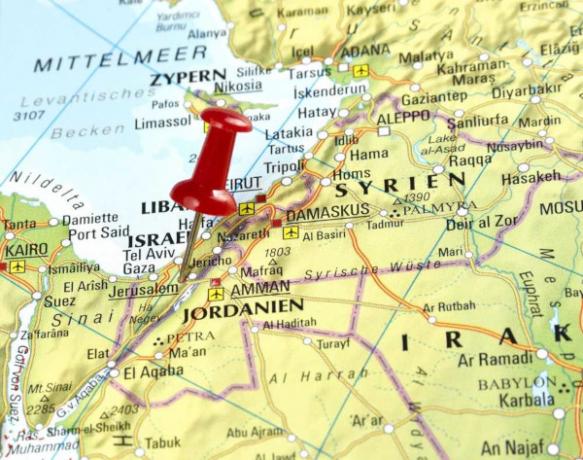The Middle East has a territorial extension of 6.8 million square kilometers, is located in West Asia and is formed by the following countries: Saudi Arabia, Bahrain, Qatar, Egypt, UAE, Yemen, Iran, Iraq, Israel, Jordan, Kuwait, Lebanon, Oman, Syria, Turkey.
Its population is approximately 260 million inhabitants. The ethnic and cultural diversity among the inhabitants of the Middle East is enormous, a factor responsible for the conflicts in that region. One of the diversified elements is religion, with different beliefs and dispute for territories considered sacred.
The three main monotheistic religions, that is, belief in the existence of a single God, emerged in the Middle East: Islam, Christianity and Judaism.
The religion with the highest number of followers is Islam (90% of the population). It is a monotheistic religion, based on the teachings of Mohammed, or Muhammad, called Mohammed by Westerners. After the death of Mohammed, the Islamic religion suffered ramifications, occurring division into several strands with distinct characteristics. The segments of Islam that have the greatest number of adherents are the Sunnis (majority) and the Shiites. Contrary to what many people think, Islam is not only divided into Sunnis and Shiites, there are several other smaller groups, among them the Druze and the Alawites.
The second largest religion in numbers of followers in the Middle East is Christianity. The region is home to around 12 million Christians, many from Arab churches, such as the Coptic or the Maronite, which are among the oldest in Christianity. The countries with the highest number of Christians are Syria and Lebanon.
In addition, more than 6.5 million Jews live in the Middle East, almost all of them in Israel. The territory that currently corresponds to Palestine was already inhabited by Jews about four thousand years ago, however, they were expelled during the Roman Empire. Jews returned to the Middle East through migratory flows, which were strengthened with the construction of the State of Israel, in 1948. This fact is one of the main reasons for the constant conflicts between Jews and Palestinians, as Israel is annexing territories inhabited by Palestinians.
The city of Jerusalem is disputed by the three great religions. It is a sacred place for Islam, Christianity and Judaism. Check out the symbolic importance of Jerusalem for these religions:
- Islam: Domo da Rocha, in Jerusalem, is the third most important site in Islam, from where Muhammad ascended to heaven.
- Christianity: Church of the Holy Sepulcher, located in Jerusalem, marks the traditional site of the crucifixion, burial and resurrection of Jesus Christ.
- Judaism: For Jews, the Wailing Wall, part of the Second Temple, located in the city of Jerusalem, is the holiest site of all.
Do not stop now... There's more after the advertising ;)
By Wagner de Cerqueira and Francisco
Graduated in Geography
Brazil School Team
See too!
Middle East - A region marked by conflicts.
Middle East and water scarcity - The contrast between the abundance of oil and the lack of water.
Natural Aspects of the Middle East - The natural setting of a place that practically doesn't rain.
Asia- continents - geography - Brazil School

